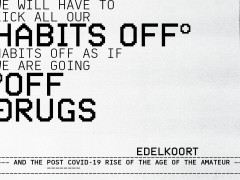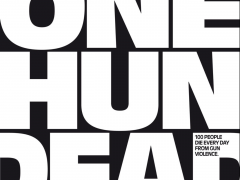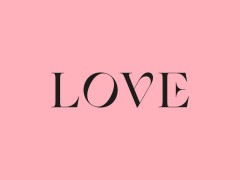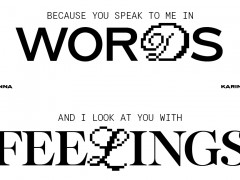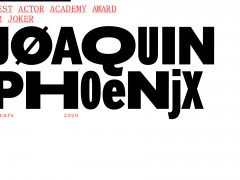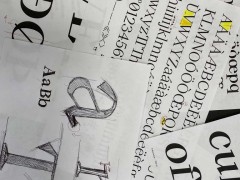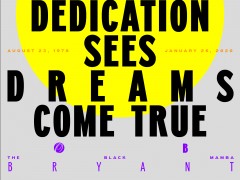The Typographic Dante: to hell and back with Barrie Tullett’s stunning visual project
Thirty years in the making and impressive as ever, Barrie Tullett’s The Typographic Dante is an ode to the power of text & type.
The Typographic Dante is a series of typographic illustrations created by Tullett as a response to the unfolding narrative of Dante Alighieri’s The Divine Comedy.
Written between 1308 and 1320, the poem The Divine Comedy describes Dante’s journey through Hell, Purgatory and Paradise aka a soul’s journey towards God.
With each Canto being illustrated typographically, and each book of the Divine Comedy having a different typographic style this project by Barrie Tullett, Programme Leader for Graphic Design at the University of Lincoln, eventually illustrates each of the 100 Cantos of Dante’s Divine Comedy using a different ‘obsolete’ technology.
The 34 Cantos of The Inferno are realised using the wood and metal type of letterpress printing, the 33 Cantos of Purgatory are created on the typewriter, and the 33 Cantos of Paradise will be visualised with Letraset.
The seed of the project was planted many years ago, but it did not begin to come together as a coherent body of work until Tullett’s final year as a Visual Communication student at the Chelsea School of Art.
Ever since, he has returned to the project whenever he have had the time, and has slowly added to the illustrations.
This visual feast of the mind was presented back in 2017 in an exhibition of extreme typographic beauty at the National Print Museum in Dublin, Ireland.
“I had long been interested in Dante’s Inferno, from about the age of thirteen, although my early readings were informed by pop culture” writes Tullett in Eye Magazine of his project.
“By the winter of 1989, I must have read something about the forthcoming TV Dante by Tom Phillips and Peter Greenaway – due to be broadcast in the summer of the following year – as I had been looking at Phillips’s Inferno illustrations again, and was struck by the way his work explored completely new ways of interpreting the texts. These were as eye-opening and innovative to me as Rauschenberg’s drawings had been when I saw them for the first time.”
“That must have been when my decision was made – I have an old notebook full of project ideas and drawings of people on the tube, and there, on one of the pages, among a series of Final Major Project ideas, is a wee sketch of a piece of paper being lifted from a block of wood type, and the five words ‘Dante’s Inferno. There’s your book!”
“Barrie Tullett has certainly been Danteggiaring for a long time – 30 years. An extraordinarily sensitive, cogent, daring and thrillingly inventive artist, he has made Dante’s journey his very own through a highly meticulous, profoundly reflected process of rereading, looking anew, distilling” writes Mika Provata-Carlone, an independent scholar, translator, editor and illustrator, for Bookanista on the Typographic Dante exhibition presented last year at London’s Southbank Center.
“Tullett is an artist, artisan, teacher and master craftsman in love with letterpress printing. With the materiality and aesthetics of the written word, with the relationship between the visual impact of texts and their meaning. He looks back to old illuminated manuscripts for the way they blur the boundaries between image and word, and to the power of the printed text to both stand up for and against.”
“His Typographical Dante is a true labour of love, a magnum opus and a work of art of truly moving humility and brilliance. It is also a spectacular homage to the art of printing, the art that made Dante’s Commedia possible, in so many closely intertwined ways.”
“Engrossed by the art of the printed text in its purest, most dynamic form, he chose to focus on letterpress art rather than conventional pictorial illustration from the start. The text, its corpus of words, is in itself the material for giving visual body to a narrative.”
“For Tullett Dante’s text is a way of teaching and of learning. An act of breaking down language, visual expectation, narrative complexity in order to enhance their most vital qualities and forces.”
Barrie Tullett was the featured artist at this year’s Artists’ BookMarket.
In the event of The Fruitmarket’s Gallery online experiment tonight which will kick off with a short conversation between Tullett and the Fruitmarket's Iain Morrison followed up by a reading through Dante's Inferno using the artist’sprints as our Virgil-like guide Typeroom urges everyone log-in “on the night to listen as we delve together through the circles of hell, reading as much as we can stomach.”
Join “To Hell and Back: A group reading of Dante’s Infernous” via this link this evening.
Tonight’s our foray into online events. Join us from 5pm as Barrie Tullett talks with our Iain Morrison about his obsessive Typographic Dante project, and then with anyone who wants to join, we're going to read as much of Dante’s Inferno as we can! https://t.co/yiUJI6sd3Y pic.twitter.com/WSSH8uCfad
— Fruitmarket Gallery (@fruitmarket) March 26, 2020
Barrie Tullett is a freelance graphic designer and senior lecturer and programme leader at Lincoln School of Art & Design. He grew up in Walthamstow, East London and studied at St Martin’s School of Art and Chelsea School of Art.
He is the author of Typewriter Art: A Modern Anthology (Laurence King, 2014) and along with Philippa Wood he is part of a collective called The Caseroom Press.
An independent publisher whose work explores the function and format of the book “from single limited editions to multiple copies; from poetry to prose; from the artists’ book to traditional print; from stencils, to typewriters; from wood and metal type to litho and digital print processes” the duo collaborate with a number of illustrators, designers, painters, poets, sculptors, students and musicians.
Tags/ typography, exhibition, letterpress, typewriter, barrie tullett, letraset, dante

